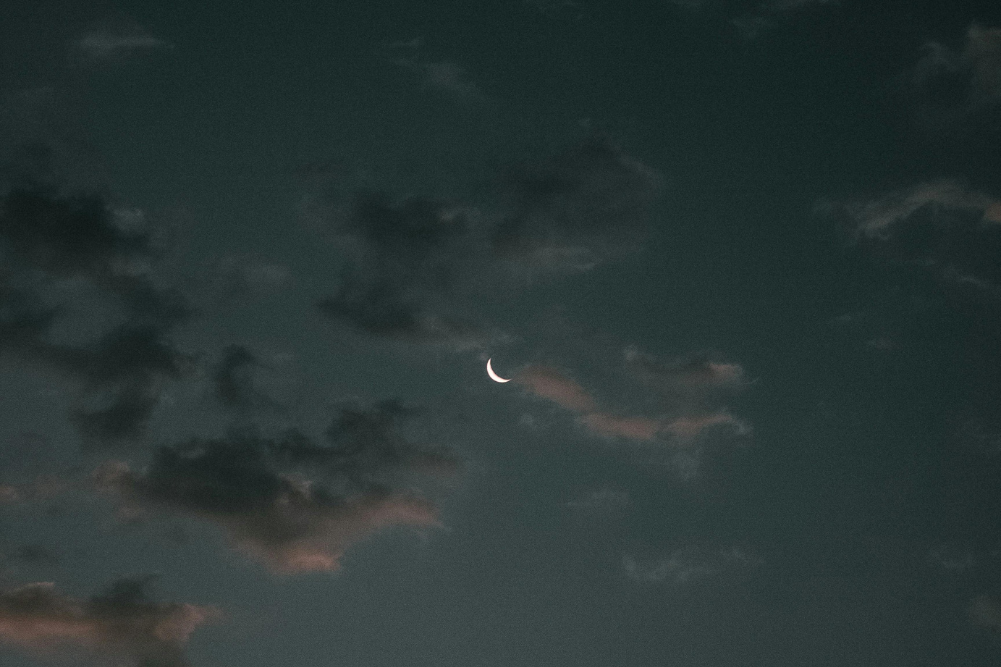The power is in your hands
Discover how palmistry reveals your talents, character, and destiny through hand shapes, lines, and ancient wisdom.
“Your karma changes with each clap in kirtan,” the Indian Yogi told me after a temple ritual. “Really, tell me more please.” Rather than being set in stone, he explained that lines and our destiny are constantly changing according to our choices. I reached out my hand to this renowned Bengali palmist. He scrutinised and prodded the valleys, mounds and furrows of my hand with intense concentration. “This is your past, your inborn gifts,” he held my left hand. “The right – your present and future.” He proceeded to explain my character, health and destiny. Though doubtful at the time, in hindsight, he was right. Details about my marriage, character, child, career and living environment unfolded exactly as he had predicted. All grasped from the physical features of my hands. This esoteric art had a lot more credibility after that encounter.
Timelines
Aristotle wrote 2500 years ago, “Lines are not written into the human hand without reason.” Our palms provide a map to a deeper understanding of latent talents, tendencies and fate. Palmistry is believed to be born in ancient India, spreading to Tibet, China, Persia, Egypt and Greece. Palmistry was among the main methods utilised by ancient soothsayers alongside astrology. Ancient authors who wrote about palmistry include Indian Sage Valmiki, Greek Ptolemy, Roman Juvenal and China’s Yellow emperor Huangdi. Though many religions condemned palmistry as the devil’s work, there are occult branches of Buddhist, Christian, Hindu and Jewish traditions that endorse palmistry.
After a lull, palmistry was revived in the 19th century due to classics including the Book of Fate and Fortune and Palmistry for All by Irish astrologer Count Louis Hamon (aka William John Warner or Cheiro). Westerners waved palmistry in when in 1897 Edgar de Valcourt-Vermont founded the American Chirological Society and Katherine St. Hill started the Cheirological Society of Great Britain in 1889. Good palmists could convince even the staunchest sceptics such as Mark Twain who wrote in Hamon’s visitors book after a session that he – “exposed my character to me with humiliating accuracy”.
Weird Science
Our hands are as unique as our fingerprints. From foetus’, our palms offer a snapshot of our early development. Though science doesn’t generally support palmistry, researchers have found correlations between palmistry and dermatoglyphics (the study of fingerprints and palm lines) and human development.
Here are some medical study findings:
- In males, a ring finger that is longer than the index finger indicates higher prenatal testosterone. The bearer is more likely to have more progeny, a longer penis and handsome facial features.
- Men with longer index fingers than ring fingers are more susceptible to heart disease and schizophrenia but less prone to ADHD. Children with this trait showed better self-control.
- A significant correlation between longevity and the lifeline was observed when Newrick and colleagues studied 100 corpses in 1990.
- A fingerprint marker at birth was connected with a diabetes diagnosis after aged 50 according to a study by Kahn et al, A fingerprint marker from early gestation associated with diabetes in middle age: The Dutch Hunger Winter Families Study.
Talk to the hand
Are you ready to get your gypsy on? Summon both information and intuition to provide a well-rounded reading. There are conditions that assist in reading a palm accurately and respectfully. Once you have permission to read a palm, provide a private place and enable the subject to record findings. Ensure you both have clean hands and good natural lighting. A magnifying glass, torch and camera are also useful to view and record observations.
Dive into divination with an overall impression of the shape, size, texture and colour of both hands including the fingers. “The left or secondary hand represents the inner life – the subconscious or what you’d like to happen. The dominant hand, often the right, shows the real future.” If you are left-handed, it is the opposite.
Is it an earth, fire, air or water hand? Note the relative finger length and flexibility. Next check out the major mounds. Now trace the lines. Take notes if needed. People can be very impressionable so don’t let the reading get out of hand with negative details. Hand out information with a touch of sensitivity and restraint. Explain findings by highlighting features with a pointer or in a photo.
General observations
First hand: Shaking or holding hands reveals volumes about someone. Skin on our hand is our main interface with the world. A handshake can provide character clues based on their palm skin. Chiromancy or chirology categorises skin as sandpaper, paper or silk.
Sandpaper: This coarse, deeply lined palm indicates a thick-skinned nature that tends to suppress emotions. These practical types are often happiest in physical outdoor jobs such as a trade or physical trainer. They can feel like a trapped animal in a sedentary job and thrive with manual work that allows them to use more brawn than brain. Those with rough hands can be tough dealing with others and situations. Emotional sensitivity isn’t their strong point, but they exhibit kindness through acts of service.
Paper: This medium-thick skin is most common. Owners of this type lean towards more mental rather than labouring careers. They prefer a logical and rational approach with plenty of proof to back up claims. Their adaptability allows them to take on many roles and relate to a wide range of people. They often have a talent for technology and communication. Their palms have more lines and palms tend to be more rectangular showing their practical side. The resilient skin mirrors an inner fortitude.
Silk: This moist, smooth and sensitive skin is more common in women. A silky soft hand suggests someone who is empathetic, intuitive, sensually receptive and predominantly emotional rather than intellectual. They are attracted to artistic, ethereal and spiritual pursuits. A tendency for anxiety becomes evident through sweaty palms. Owners of silky skin hands tend to be creative and sensitive to their surroundings including smells, sounds, sensations and tastes. A slow, gentle and reassuring approach is the best way to relate to someone with this thin skin. They can withdraw when criticised or treated harshly. Handling them with kid gloves will bring out their best.
Colour
Yellow/orange palm: Ingesting high levels of betacarotenes from orange foods can have this effect. Alternatively, it may indicate gall bladder, liver or anger issues.
Red palm: This can indicate robust health, prosperity and passion. If excessively red it may be related to high blood pressure and inflammation.
Pink palm: This is a sign of someone amiable, supportive and supported by loved ones. In essence, they have a good heart.
Pale palm: Isolated, introspective and low-vitality types may display white palms. They are often artistic and empathetic.
Hands on
What type of hand do you have? A square earth hand? A long- fingered air hand? A rectangular fire hand or a flexible, slender water hand? Each hand type has unique talents and tendencies as follows:
Earth: Square palms with stubby fingers suggest a person who is patient, practical, steady, unpretentious and good with their hands.
Water: Dreamy, creative and emotional types may have long palms and fingers. They are often talented artists, dancers or musicians.
Fire: Rectangular palms with short or tapered fingers are a sign of someone who is ambitious, bold, energetic and entrepreneurial.
Air: Square palms with long bony fingers belong to one who is analytical, aware, intuitive, philosophical while excelling in expression and manifesting ideas.
Measuring mounts
Mounts are elevated palm pillows mostly at the fingers base. High mounts suggest a strength and interest in this area. Though there are 10 in total, we will focus on the seven major mounts.
Mount of Venus: A ripe Venus indicates luck, love, lust, luxury and sensuality. Frigid people may have a flat Venus while a plump Venus suggests rampant desires.
Mount of Jupiter: This line under the index finger is a sign of confidence, courage and powerful role models or mentors. A sunken mount may mirror low self-esteem.
Mount of Saturn: A strong Saturn shows maturity, seriousness and a strong work ethic. If underdeveloped, it may indicate poor discipline.
Mount of Apollo or Sun: Successful and powerful personalities have prominent Sun mounts. They enjoy time in the spotlight with healthy self-esteem and an appreciation for beauty. A poor Sun mount may mean self-doubt.
Mount of Mercury: A distinct Mercury suggests exceptional verbal or written communication skills plus a wicked wit. A deficient mount can be blocked communication or progress.
Mount of Moon: A full lunar zone indicates an imaginative, intuitive and caring character. If overdeveloped, they may have escapist tendencies.
Mounts of Mars: A lower Mars adjacent to the wrist shows a warrior-like spirit, a distinct upper Mars conveys a courageous and confident type.
Between the lines
Reading the lines is one of the easiest maps to reach the real person. The deeper the crease, the steadier that aspect. A weak or sketchy line suggests that area could do with some strengthening. An interrupted line indicates a blockage, break or breakthrough. Hypersensitive souls who are more mentally impressionable have more lines. Fewer lines indicate a more straight forward, emotionally composed character.
Head line: Our intellectual interests and life lessons are imprinted here. Unconventional thinkers have wavier lines than traditional types.
Heart line: This horizonal line under the fingers represents relationships and emotions.
Life line: Scooping around the thumb’s base, this line reflects energy and joie de vivre. Independence may be indicated by a broken line.
Mercury line: This marks one’s capacity to communicate and travel.
Sun line: Fame, fortune and fulfillment are defined in this line.
Fate line: Flowing from the bottom of the palm to the middle finger, a strong fate line indicates a sure sense of purpose.
Relationship lines: On the side of your palm beneath the pinky, these lines show significant relationships.
Finger pointers
Finger shape and size can speak louder than words. Flexible fingers are a sign of mental flexibilityA long finger denotes the following:
- Index (Jupiter) – decisive and dominant personality
- Middle (Saturn) – determined and disciplined
- Ring (Sun) – charismatic, confident and energetic
- Little (Mercury) – amusing and expressive
- Thumb – a large thumb is associated with iron will
Professional palmist
Studying the hands of my daughter and I, master palmist Sulabh Jain relayed astoundingly accurate details about our past and personality.
Founder of chariotpalmistry.com, Jain started studying palmistry at eight years old from his grandfather, Bagwan Das Jain. He went on to complete a PhD in palmistry in India combining psychology and palmistry. Jain focussed on childhood trauma and how it produces lines on the hands.
Author of the Dictionary of Indian Palmistry Symbols and Dictionary of Chinese Palmistry Symbols, Jain has consulted thousands of clients in his Sydney practice and online worldwide for decades. Rather than solely a predictive tool, Jain sees palmistry as a “spiritual tool, designed to develop one over time”. Recently, Jain predicted the attempted assassination of Donald Trump on his YouTube channel after analysing Trump’s hand. Soon after, it came to pass.
Jain combines palm reading with spiritual counselling. Lines alter with effort, according to Jain, “Think of the hands as a blank canvas that we write upon with our thoughts. To create new lines, we introduce new thoughts. To remove old lines, we can stop thinking those thoughts.” He recounts the case of a client who lacked confidence in her career, “Over a three-year period, she has grown a business line on her hand, and also developed a strong line for spirituality, too.” For remedial measures, Jain may suggest a specific meditation, mantra, charity and, more rarely, gemstones. “Palmistry and palmists are guides to help you to create the life you would like,” says Jain. “Try this timeless tool to enhance self-understanding and self-actualisation.”








